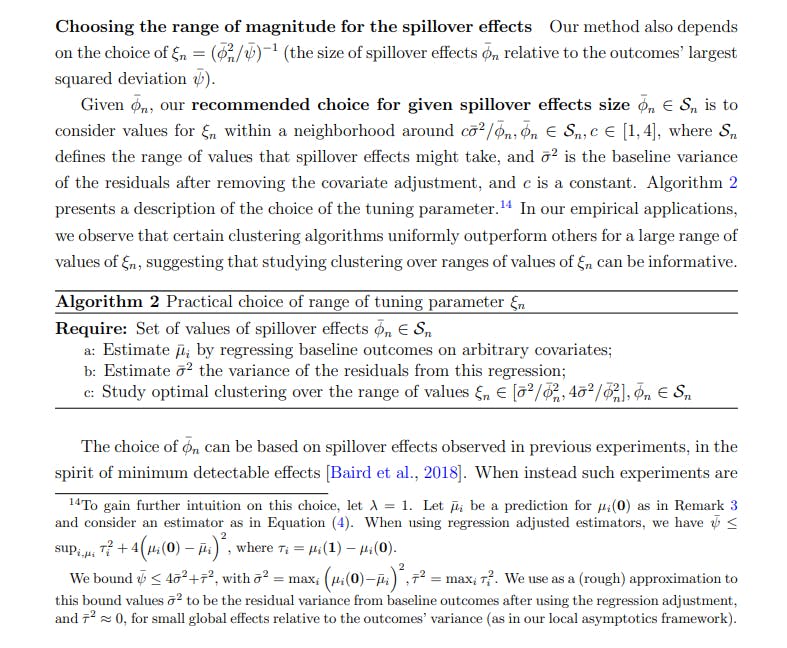Authors:
(1) Davide Viviano, Department of Economics, Harvard University;
(2) Lihua Lei, Graduate School of Business, Stanford University;
(3) Guido Imbens, Graduate School of Business and Department of Economics, Stanford University;
(4) Brian Karrer, FAIR, Meta;
(5) Okke Schrijvers, Meta Central Applied Science;
(6) Liang Shi, Meta Central Applied Science.
Table of Links
Empirical illustration and numerical studies
6 Recommendations for practice
Our algorithm depends on the choice of the network, and spillover effects. We conclude with a summary of our method and explicit recommendations for practice.
Choosing the adjacency matrix The network choice must depend on researchers’ prior knowledge of which dimension spillovers propagate over. When researchers only have some prior distribution over which network matters the most, our framework directly extends to these settings, where the objective must average over the distribution of the network. In this case researchers can compute the expected bias and expected variance over multiple networks by first computing the bias and variance for each network separately as we discuss in Section 3, and then taking a weighted average with some pre-specified weights (e.g., equal weights).

Choosing between a Cluster or Bernoulli design: an explicit rule of thumb Given the range of values of ξn, and the choice of the network, Theorem 3.6 provides a rule of thumb to choose between a cluster or Bernoulli design. Table 1 suggests a rule of thumb ϕ¯ n √ Kn > 2.3 for binary outcomes when ψ¯ = 4. Figure 2 provides a wider and specific range of values of the spillover effects that motivate running a cluster experiment, based on the size of the neighbors assigned to different clusters, and the number of clusters.
Choosing the optimal clusters Finally, once researchers decide to run a cluster experiment, Algorithm 1 provides an explicit algorithm to estimate the optimal clusters via semi-definite programming, choosing both the clustering and number of clusters.
This paper is available on arxiv under CC 1.0 license.

